Recent Fire Damage Posts
Restoring the Past: Cleaning and Restoring Fire-Damaged Documents and Photos
11/30/2023 (Permalink)
A fire can ravage homes and businesses, destroying valuable documents and cherished photos. These items represent memories and history that cannot be replicated, making their loss devastating. Fortunately, trained professionals and specialized equipment can restore these items, even after severe fire damage. In this blog, we will explore the process of cleaning and restoring fire-damaged documents and photos.
Assessing the Damage
The first step in the restoration process is assessing the extent of the damage. Document restoration experts can evaluate the condition of the items and determine the best course of action. They assess factors such as the degree of exposure to smoke and water, the level of charring, and any existing mold or other contaminants.
Cleaning the Documents and Photos
Once the assessment is complete, the actual cleaning process begins. It involves removing any debris, soot, and other fire-related residue that accumulates on the items. The process is delicate, and it requires specialized equipment to avoid further damage. Below are the methods employed in the cleaning process:
- Dry Cleaning: This method uses soft brushes, and vacuums to remove the smoke and soot from the surface of the item carefully. It is used to clean sturdy items such as books, binders, and other non-porous surfaces.
- Wet Cleaning: Wet cleaning involves using specialized chemicals and water to remove smoke, soot, and debris from the surface of the item. Wet cleaning is appropriate for items such as photographs or paper materials that cannot withstand dry cleaning methods.
- Freeze Drying: In cases where the items are soaked with water, freeze drying is used to restore them. This process involves freezing the items to minimize further water damage and then slowly drying them over a period of time in a vacuum using specialized equipment.
Digital Restoration
After being cleaned and dried, the next step is digitizing the items. Digital restoration technology provides an effective solution for restoring damaged photos and documents. Professional restorers use specialized software and hardware to remove creases, tears, and other physical damage in scanned versions of the items, effectively restoring them to their original condition.
Storage
After the restoration process is complete, the documents and photos must be carefully stored to prevent future damage. They are placed in acid-free storage containers, folders, or envelopes to maintain their quality and integrity. It is essential to store the items in a cool, dry place away from direct sunlight and moisture to avoid further damage.
At times, it may seem hopeless to restore items damaged by fire. Fortunately, document restoration experts are equipped with specialized equipment and expertise to restore fire-damaged documents and photos. The restoration process involves careful evaluation, cleaning, digital restoration, and careful storage in acid-free containers. Through this process, these valuable items can be preserved and cherished for many years to come.
Basic First Aid for Burns: How to Provide Immediate Care for Different Types of Burns
8/3/2023 (Permalink)
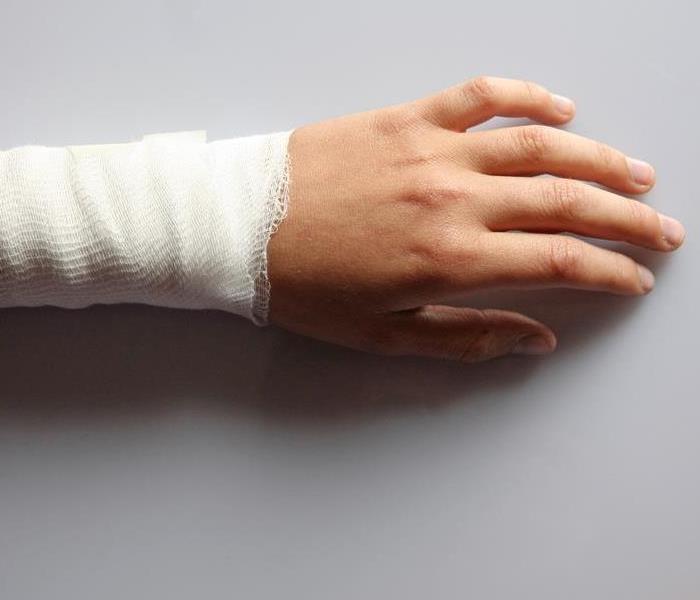 Knowing the difference in the types of first aid burns can make a difference in the care after a burn.
Knowing the difference in the types of first aid burns can make a difference in the care after a burn.
Burns can happen in an instant and can range from minor to severe. Knowing how to provide basic first aid for burns is essential to minimize pain, prevent infection, and promote faster healing. In this blog post, we'll discuss the different types of burns and provide a step-by-step guide on how to administer basic first aid for each type.
First-Degree Burns
These burns affect only the outer layer of the skin and typically result in redness, pain, and mild swelling. They may be caused by sunburns, minor scalds, or brief contact with a hot object.
- Remove the source of the burn, such as taking the affected area away from the hot object or rinsing the burned skin with cool running water.
- Cool the burn by holding it under cool running water for 10-15 minutes. Do not use ice as it can cause further damage.
- Cover the burn with a sterile non-stick dressing or clean cloth to protect against infection.
- Take over-the-counter pain relievers, like ibuprofen, to help alleviate pain and reduce inflammation.
- Avoid popping any blisters that may form.
- Seek medical attention if the burn covers a large area, is on the face, hands, feet, genitals, or if the person is experiencing severe pain or signs of infection.
Second-Degree Burns
These burns involve both the outer layer and the underlying layer of the skin. They are more severe and can cause blisters, redness, swelling, and intense pain. They may be caused by hot liquids, flames, or prolonged contact with a hot object.
- Ensure the person and you are safe from further harm. If necessary, use a fire extinguisher or smother flames with a blanket.
- Cool the burn by running it under cool water for 10-20 minutes. Do not use ice or very cold water.
- Remove any clothing or jewelry near the burned area, as swelling may occur.
- Wrap the burn loosely in a clean, dry cloth or sterile non-stick dressing.
- Over-the-counter pain relievers can be taken to manage pain and reduce swelling.
- Seek medical attention for second-degree burns larger than three inches in diameter, burns on the face, hands, feet, or genital area, or if the person is experiencing severe pain, signs of infection, or difficulty breathing.
Third-Degree Burns
These burns are the most severe and affect all layers of the skin. They may appear charred or white, and the damaged skin may be numb due to nerve damage. Third-degree burns require immediate medical attention and may be caused by flames, chemicals, or electrical sources.
- Call emergency services immediately.
- Ensure the person and you are safe from further harm. If necessary, use a fire extinguisher or smother flames with a blanket.
- Do not use water to cool the burn.
- Cover the burn loosely with a clean, dry cloth or sterile non-stick dressing.
- Elevate the burned area if possible.
- Never attempt to remove anything stuck to the burn.
- Monitor the person's breathing and provide CPR if necessary, or until medical help arrives.
Remember, first aid for burns is essential, but it's crucial to seek medical attention for severe burns. These guidelines provide initial care and should not replace professional medical advice.
Knowing how to provide basic first aid for burns can make a significant difference in the immediate care and well-being of someone who has been burned. By following these steps for first-degree, second-degree, and third-degree burns, you can help alleviate pain, prevent infection, and promote faster healing. Remember, when in doubt, always seek medical attention for severe burns.
Fire Safety 101: How Many Fire Alarms Should You Have in Your Home?
4/12/2023 (Permalink)
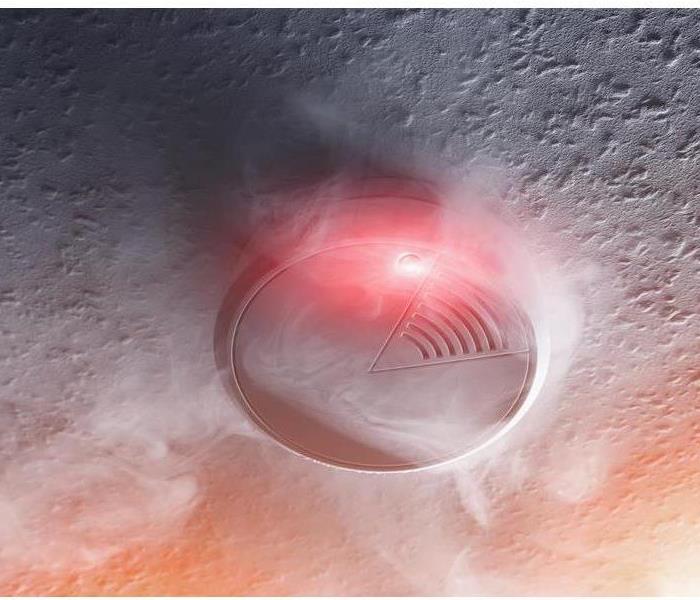 A fire alarm is an essential piece of equipment for your home or business.
A fire alarm is an essential piece of equipment for your home or business.
A fire alarm is an essential piece of equipment for any home or business. It will alert you to the presence of smoke or flames, giving you time to escape safely before they cause damage and injuries.
A fire alarm should be installed in every room where there's a potential for fire damage, such as kitchens and laundry rooms. If you have children in your home who are still young enough to crawl (or even walk), then it's also important to install alarms on every floor so that they can't get into trouble while their parents aren't looking.
Types of Fire Alarms
There are a few different types of fire alarms that you can choose from.
Smoke detectors: These are the most common type of alarm, and they're designed to detect smoke in your home. They can be battery-operated or hardwired into your electrical system. If you have an older home, it's important to make sure that all of your smoke detectors are working properly and have fresh batteries in them at all times--even if they're not going off! If a detector goes off when there isn't actually any danger present (like when someone burns toast), it could make people think there's a real emergency when there isn't one at all--and then everyone will panic unnecessarily!
Heat detectors: These devices sense high temperatures inside your house instead of detecting smoke itself like regular smoke detectors do; this means that they'll go off even if there isn't any visible sign of fire yet (like heavy black clouds billowing out from under closed doors).
Requirements for Fire Alarms in the Home
Fire alarms are required by building codes, local laws and insurance requirements. These requirements vary from state to state and city to city.
In addition to these basic requirements there are other considerations that may affect how many fire alarms you need in your home:
How Many Fire Alarms Do I Need?
The number of fire alarms you need depends on the size of your home. The National Fire Protection Association recommends one fire alarm per floor and one in each bedroom, but there are other factors to consider as well.
If you live in an apartment building or condo, the regulations are different than if you own a single-family house or townhouse. In an apartment building, there may be multiple buildings on one property with each having its own set of regulations regarding fire safety equipment (like smoke detectors). It's important to check with your landlord before buying any additional devices yourself because they could void any warranty coverage provided by them if they're not installed properly or meet code requirements based on local laws governing residential dwellings like yours
Placement of Fire Alarms
The placement of your fire alarms is also important. You should make sure to place them at least 10 feet away from any cooking appliance and at least 12 inches from any wall or corner. The best locations are those that are free of obstructions, like windows and doors.
Testing Fire Alarms
The best way to ensure that your fire alarms are functioning properly is to test them monthly. Test all smoke alarms and carbon monoxide detectors, including those that are hardwired into the building's electrical system.
If you have a battery-operated smoke detector, replace its batteries twice a year (or more often if you live in a hot climate). Replace all smoke detectors every 10 years, however, if you have hardwired units with sealed batteries that cannot be accessed without replacing the entire unit or disconnecting power from it, then they should be replaced after 15 years of service life.
Choosing Your Fire Extinguisher For Your Home
12/1/2022 (Permalink)
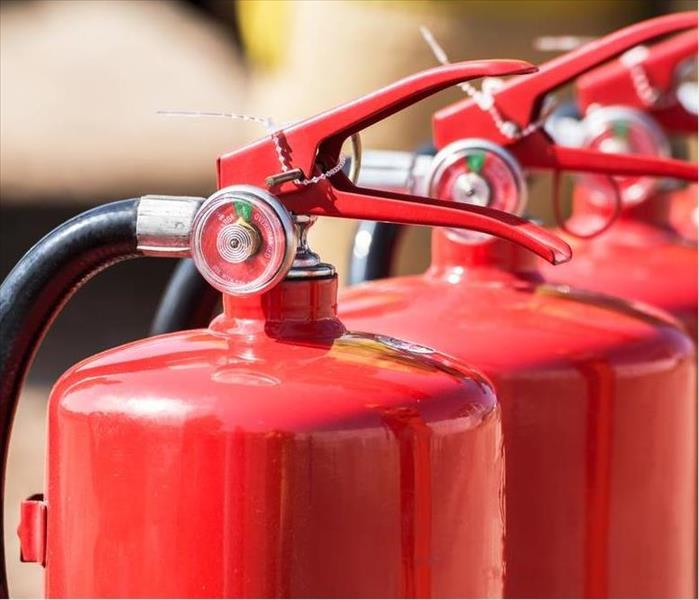 A fire extinguisher is a must-have in any home
A fire extinguisher is a must-have in any home
Choosing Your Fire Extinguisher For Your Home
A fire extinguisher is a must-have in any home, but it can be confusing to choose one. It's important to consider what kind of fire you're most at risk for, whether the extinguisher is for your kitchen or garage, and how to use the product when there's an emergency. The following guide will help you make the right decision about which extinguisher is right for you!
Assess the Risk
When you’re deciding which type of extinguisher to purchase, it’s important to consider what kinds of fires you might encounter. If you live in a home with a high risk of fire (say, if there are young children or pets), then you will likely want an extinguisher that can be used on multiple types of fires—such as Class A, B, and multipurpose. However, if your home has low risks for all types of fires combined (for example, no pets or small children), then buying a class A or B unit should serve its purpose.
In addition to assessing your risk level as it relates to the likelihood of experiencing a fire at home, also consider whether any people who live in the house are disabled or elderly—if so they may need assistance using a fire extinguisher during an emergency situation so make sure yours is easy-to-use even for those with limited mobility!
Multipurpose Extinguishers
The class of the fire will determine which type of extinguisher you need to use. Class A fires are caused by flammable liquids, such as gasoline, oil, or grease. Class B fires are caused by flammable gases, such as propane or natural gas. If you're not sure what kind of fire is burning, use a dry chemical extinguisher on all types of fires until you can figure out what's happening.
If you have a multipurpose extinguisher, it can be used on Class A and B fires. This type of fire extinguisher is usually found in kitchens and garages.
Mounting Brackets
If you're like most people, you want to be able to easily access your fire extinguisher. Many models come with mounting brackets that allow for quick and easy installation to a wall or other flat surface. You'll need to make sure the bracket is strong enough to support the weight of your extinguisher and sturdy enough so that it doesn't get knocked off by everyday kitchen activities.
Consider Your Garage
If you have a garage, the first thing to consider is whether your home fire extinguisher needs to be multipurpose. For most garages, a multipurpose unit will be suitable. However, if you store flammable liquids or other chemicals in your garage and regularly work with them or drive often with them inside the vehicle, you may want to consider getting one specifically designed for fighting fires that involve those materials. Another factor to consider is the size of your garage: Multipurpose units usually come in smaller sizes than specialty ones do. Smaller homes will likely find that a 10-pound multipurpose unit is sufficient; larger houses might need more than one 10-pound fire extinguisher on hand at all times (and another one stored outside).
Multipurpose units are also inexpensive compared with specialty ones—a few hundred dollars versus thousands—so it makes sense for most homeowners who don't know what kind of risks their own homes face from fire hazards.
Knowing what kind of fire extinguisher to get for your home can help you protect the people you care about the most from the dangers of fire. By familiarizing yourself with how each type works, you can be better equipped to make an informed decision when shopping for a new extinguisher.
We hope that this article has helped you understand how to choose the right fire extinguisher for your Yavapai County, AZ home. Remember, a fire can happen anywhere and at any time. What’s most important is that you have an extinguisher close by in case of an emergency. If you experience a fire in your home, give SERVPRO of Yavapai a call, and we will be there quickly to restore your home to its preloss condition!
How To Estimate Commercial Fire Damage
8/28/2022 (Permalink)
How To Estimate Commercial Fire Damage
A commercial fire is devastating, and after a fire, you may feel confused, frustrated and scared. In many cases, the insurance companies have adjusters that will do the actual calculations, but you still need to tell them exactly what was lost in the fire. After contacting your insurance agent, you will need to estimate what was lost. This may seem like a difficult task, but there are very basic things that you can do to make it easier.
Take an Inventory
The first thing you want to do is take an inventory of everything that is damaged. Write it all down, even if it seems inconsequential. You should write down:
- Damage to the exterior and interior of the structure
- Inventory loss
- Equipment loss, particularly electronics
- Supply loss
Knowing what you lost is the first step in getting an accurate estimate of the damage caused by the fire and firefighters. Fighting the fire sometimes causes more damage than the fire itself.
Evaluate Structural Damage
You should only enter the structure when it is safe to do so. If the structure is damaged beyond repair or the damage is extensive, you can use the formula, square foot cost to rebuild or repair multiplied by the total square footage of room or structure to approximate the cost of rebuilding or repairing the damage. You will also need to add in the cost of water damage and fire damage restoration in Prescott, AZ for your calculations to be accurate.
Approximate Equipment Loss
Approximating damages in a commercial fire also includes damage to equipment, inventory, and supplies. You can do this by performing a reverse inventory. Take an estimate of what you had before the fire and subtract what you have now. This is what you lost. It is particularly important in a commercial fire where inventory and supplies are damaged.
Remember, insurance companies have adjusters that use formulas to estimate the value of what was lost. You should only need to give them an accurate picture of what was lost.
4 Steps of the Fire Damage Restoration Process
7/14/2022 (Permalink)
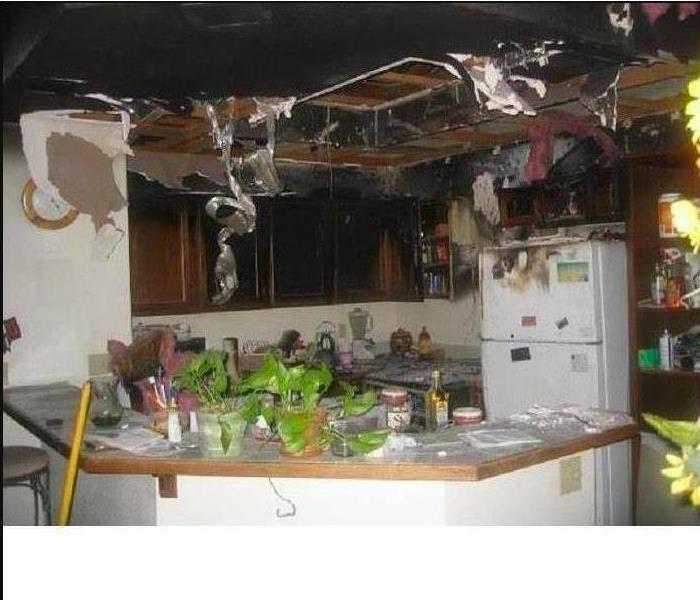 Fire damage in a Prescott Valley, AZ home
Fire damage in a Prescott Valley, AZ home
Fire Damage Restoration Process
If you have recently experienced a fire in your home in Prescott Valley, AZ, you might be at a loss about what to do now that the flames are out. Fire restoration is a serious undertaking. You can make sure the job is done right by hiring damage cleaning experts that follow a proven process.
1. Assessment
The first step in restoration is understanding the task at hand. The restoration company will inspect your home for any issues that were caused by the fire. Professionals inspect not only the immediately affected area but any rooms that might have suffered smoke damage, too. They also look for signs of water damage that resulted from the fire. Afterward, these experts use their findings to create a plan, cost estimate, and timeline for your cleanup process.
2. Property Protection
Depending on the severity of the situation, your home may need further protection. Holes in the roof and walls leave your property open to more problems. If needed, the company will seal and tarp the house to prevent further damage.
3. Cleanup
Cleaning is the most time-consuming step in fire restoration. There are many steps in the cleanup process, including:
- Removing burned materials
- Drying and repairing any water damage issues
- Air filtration and odor removal
- Inspecting, cleaning and restoring belongings
- Moving out and storing your property in a safe location
The amount of cleaning needed depends on the situation, but even a small fire can create a lot of mess.
4. Restoration
Repairing your home is the last part of the process. A fire damage restoration company can replace any building materials that your home lost so that it is structurally sound. Remediation professionals can also complete cosmetic restorations such as carpet installation and painting.
Fire restoration is a daunting process. Having a professional to keep you informed along the way can ease your mind while the work is done.
The Essential Tools of Professional Smoke Cleaning
4/4/2022 (Permalink)
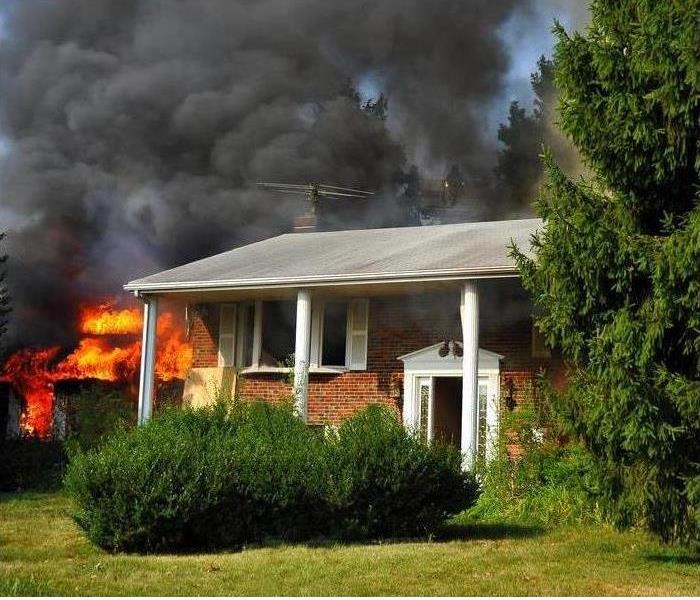 After a fire, it is important to act quickly to minimize damage and expenses to your home. Call SERVPRO for assistance.
After a fire, it is important to act quickly to minimize damage and expenses to your home. Call SERVPRO for assistance.
Professional Smoke Cleaners' Must-Have Tools
If your home in Black Canyon City, AZ, requires smoke cleaning, it is critical that the job is performed professionally. The smells of smoke are notoriously difficult to remove. They bind with fabrics and other materials and can persist for months. A company that takes shortcuts might use techniques that only mask the odors; inevitably, the unpleasant smoke odor will return, often in as little as a few days.
True experts in deodorization use the best practices established by the cleaning and restoration industry. Technicians have specialized training that helps them identify and eliminate offensive smells in your home.
Specialized Equipment for Smoke Cleaning
In addition to effective and safe cleaning agents, a smoke remediation company has access to some powerful tools. The following state-of-the-art devices for combating odors are often used after a fire or in other cases of smoke saturation:
- Air filtration devices
- Ozone machines
- Thermal foggers
An odor control technician understands the science behind persistent smells and can therefore utilize the most effective techniques and equipment. The right actions can remove smoke damage and odors without a trace. An upholstery and fabric cleaning technician specializes in removing smells from carpeting, curtains, furniture and clothing.
A Proven Process for Fire Restoration
After a fire, it is important to act quickly to minimize damage and expenses to your home. A professional team such as SERVPRO will arrive Faster to Any Size Disaster. Workers will begin an inspection and damage assessment and then move on to the most pressing issues. If needed, they will engage in water removal and drying, and then proceed with the removal of soot and smoke from all surfaces. This will be followed by cleaning and repair and then the restoration of damaged areas. Smoke cleaning is a vital step to getting your home back in good condition again. When done correctly, the smoke smells will not return.
Don’t Panic: Here’s How To Put Out a Grease Fire
1/31/2022 (Permalink)
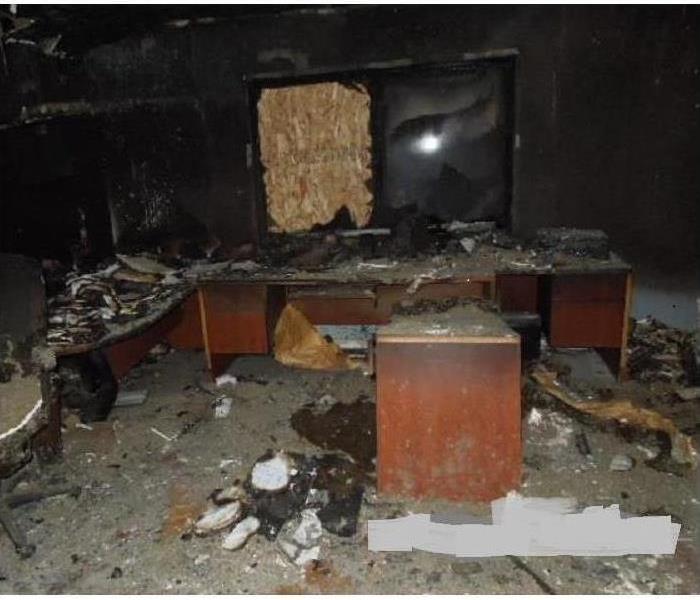 The office area of this home was severely damaged by a fire that started in the kitchen and swept through the entire house.
The office area of this home was severely damaged by a fire that started in the kitchen and swept through the entire house.
Don't Be Alarmed: Here's How To Extinguish A Grease Fire.
You’re quickly trying to put together a five star dinner in the kitchen when all of a sudden you start to smell smoke. You realize that you let the oil in the pan get way too hot, and now you have a fire on your hands! In Bagdad, AZ, grease fires can easily get out of hand fast. Instead of panicking and watching your house go up in flames until firefighters come to save the day, follow these steps to put it out:
- Call for Help
At any point, if you feel the fire is quickly getting out of hand, make sure to call 911 and get help right away. It is also a good idea to call in a fire damage repair company who will be able to deal with fire cleanup afterwards.
- Don’t Reach for Water or a Towel
People often wrongly assume that dumping water on the fire will quickly solve the issue, but this isn’t true when dealing with a grease fire. Also, don’t try to swat away the fire using a towel since this will only make the flames spread.
- Turn Off the Heat
You’ll have a hard time getting the fire to go down if you allow it access to more heat. Quickly turn your stove off!
- Cover the Flames
Use a metal lid or other metal object like a cookie sheet to cover up the fire. Oxygen provides fuel to fire, so covering it will keep oxygen away from the flames.
- Dump Baking Soda or Salt
Both baking soda and salt can help stop a fire in its tracks. While baking soda is fit for smaller fires, salt can be effective on even large fires. Use all that you’ve got to try and smother and absorb the fire.
Hopefully you will never have to deal with a grease fire in the first place, but don’t hesitate to follow these steps if your cooking ever literally goes up in flames!
How to Safely Approach the Cleanup Process After an Electrical Fire
1/13/2022 (Permalink)
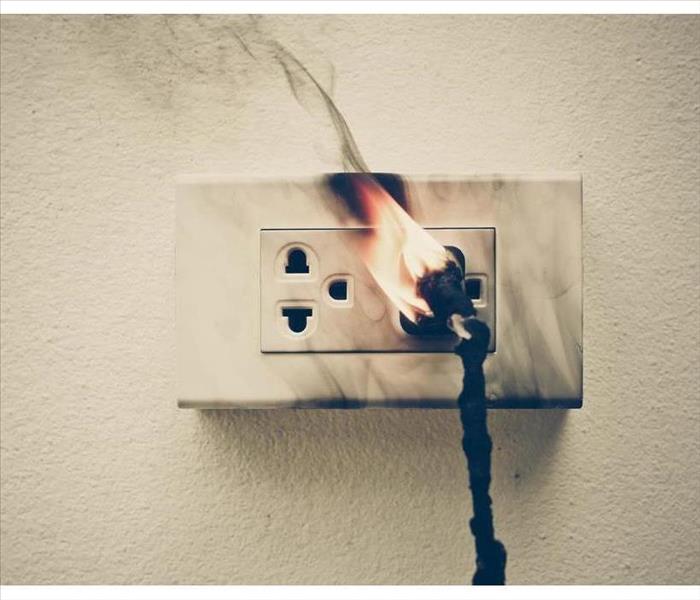 Removing ash and smoke from electronics requires special equipment and qualified experience. At SERVPRO we are ready to help you.
Removing ash and smoke from electronics requires special equipment and qualified experience. At SERVPRO we are ready to help you.
How To Handle The Cleanup After An Electrical Fire In A Safe Manner
It is a common misconception that an electrical fire can only take place in an old building. Aged wiring and damaged outlets are often blamed for the ignition of these dangerous fiery outbreaks. But old wires are not the sole cause of electrical fires. Learn how these fires can start, and what to do after a fire has occurred at your Montezuma, AZ facility.
Prevent Fires by Identifying Electrical Hazards
The best way to avoid a commercial fire incident is to watch for the telltale signs of danger. Before an electrical fire breaks out, some recognizable indicators of electrical hazards may be lurking below the surface. Watch for these key indicators of electrical problems:
- Frequent breaker overload
- Hot or smoking light fixtures
- Sparks from electrical outlets
- Loud popping sounds when turning on or plugging-in an appliance
Approach Cleanup With Caution
If your commercial business has fallen victim to a workplace fire you should begin the cleanup process immediately, but approach with caution. Hiring a fire cleanup crew is the surest way to protect and possibly save electronics that have taken fire damage. Electronic devices and machinery are very susceptible to irreversible damage from flames, smoke and soot. Avoid operating or turning on any electrical device that may have been exposed during the fire. Wiring that has been burned or received smoke damage could be at risk for further danger. Stay safe by hiring professionals.
Seek Electronic Restoration
When looking to clean and restore workplace belongings and electronics, professional fire restoration services are essential. Electrical devices require special care to prevent further damage or total loss. A restoration team can evaluate the effectiveness of computer cleanup efforts and determine what is salvageable. Removing ashes and smoke from electronics requires special equipment and qualified expertise.
After an electrical fire, the cleanup process should be left in the fit hands of trained professionals. Working with the right tools and know-how, these experts can address all of your commercial fire concerns and restore a clean and safe environment.




 24/7 Emergency Service
24/7 Emergency Service






